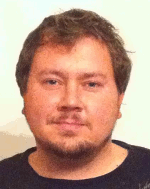 |
|
Biography
Dr. Mischa Thesberg is a Canadian researcher within the IuE. He has a B.Sc. (2008) in Computational Science from the University of Waterloo and an M.Sc. (2010) and Ph.D. (2014) in Computational Condensed Matter Physics from McMaster University. His research focuses on quantum transport and high-performance computing methods and his most recent interests include thermoelectrics, two-dimensional materials, novel nanoelectronics devices and quantum transport formalisms such as the Non-Equilibrium Green's Function (NEGF) approach.
Numerical Quantum Transport and Renewable Energy Technologies
Our work in 2016 was focused on two main areas: 1) The development and extension of numerical quantum transport solvers for the study of nanostructures and nanoscaled devices; and 2) The exploration of the potential of nanotechnology-based material design to improve the efficiency of thermoelectric power generation in order to produce clean and renewable energy.
When designing nanosized electronic devices, such as modern transistors, as well as when nanoengineering features, such as voids and superlattices, into materials, it becomes essential to use models of charge transport that are fully quantum mechanical in nature. The numerical implementation of such quantum transport models has been a central theme of our work over the last year.
Specifically, much effort has been directed towards the task of adapting the non-equilibrium Green's function (NEGF) numerical approach into a formalism capable of handling generically shaped structures (i.e. non-rectangular shaped meshes), anisotropic effective masses and carrier scattering in a numerically tractable way. This expanded NEGF algorithm was then integrated into the existing Vienna Schroedinger-Poisson (VSP) solver.
A key application area for this quantum solver throughout the year has been the field of nanostructured thermoelectric materials. A thermoelectric material possesses a special property such that a voltage occurs when a difference in temperature is applied across it. Through this effect, one can essentially use a heat source to generate electricity. Furthermore, unlike a regular steam or heat engine, this type of power generation has no moving parts, requires no maintenance and can be scaled down in size to meet the needs of any application. With such materials, there therefore exists the potential to harvest "waste heat", such as that from automobile exhaust pipes, factory heat-exhaust vents, hot computer chips, etc., and to reclaim some fraction of it in the form of clean energy.
Our work has focused on thermoelectric materials that have been specifically engineered with nanosized features so as to enhance their performance. Understanding transport in such nanostructures is a difficult task requiring quantum transport techniques. Using the NEGF solver we have developed, we have been able to study both the potential benefits of proposed nanostructuring strategies and the fragility of any efficiency improvements in the face of the natural random imperfections that would be expected in any realistic structure. More specifically, our work has highlighted the potential for thermoelectric enhancement in low-dimensional superlattice structures but has also identified some of the key culprits responsible for destroying this enhancement in real experiments.

Fig. 1: A sample unstructured mesh capable of being handled by the developed NEGF solver.

Fig. 2: Resulting charge density in a narrow empty two-dimensional channel for the mesh shown in Fig 1.



